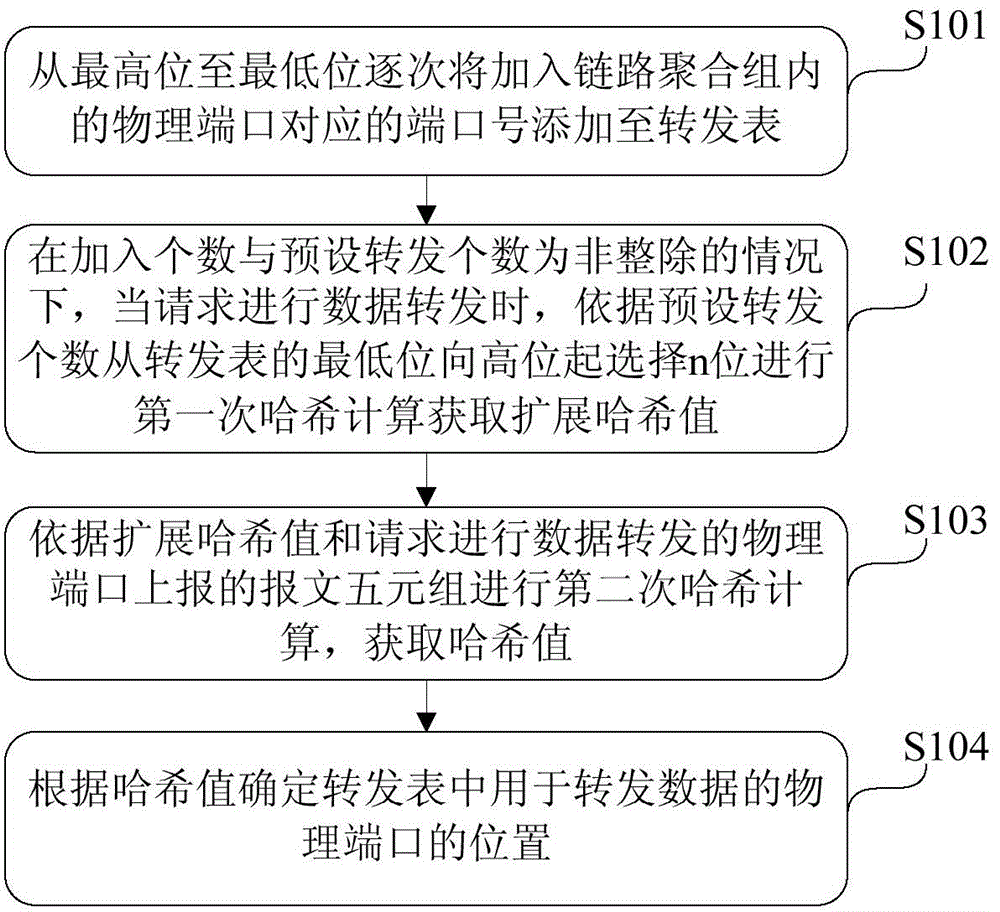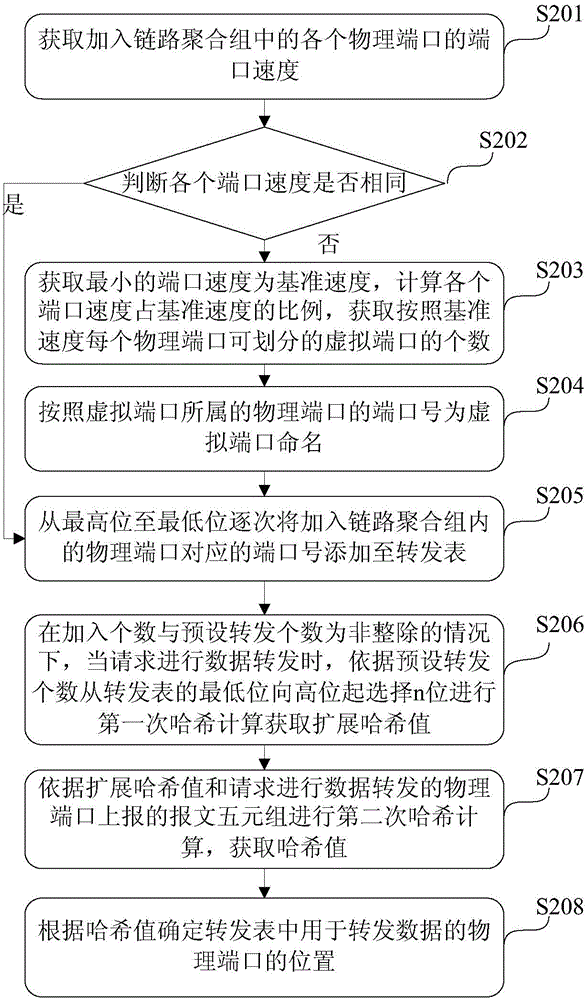Load sharing balance method and device for physical ports, and link aggregation system
A technology of physical port and load balancing, applied in the field of communication, can solve the problems of insufficient utilization of physical port bandwidth and uneven data forwarding, and achieve the effect of balanced and fully utilized data forwarding
- Summary
- Abstract
- Description
- Claims
- Application Information
AI Technical Summary
Problems solved by technology
Method used
Image
Examples
Embodiment 1
[0062] Such as figure 1 As shown, it is a flowchart of a balanced load sharing method for physical ports disclosed in Embodiment 1 of the present invention, which mainly includes:
[0063] Step S101, adding the port numbers corresponding to the physical ports added to the link aggregation group to the forwarding table in the link aggregation group successively from the highest bit to the lowest bit;
[0064] In step S101, when the link aggregation group is used, the physical port will be added to the link aggregation group. In the process of adding the physical port to the link aggregation group, in order to ensure the subsequent route selection during data Add the port number corresponding to the physical port to the forwarding table in the road aggregation group. For example, a total of 3 physical ports are added to the link aggregation group, and their port numbers are port 1, port 2, and port 3 respectively. Then port 1, port 2 and port 3 are added to the forwarding tabl...
Embodiment 2
[0079] Based on the balanced load sharing method for physical ports disclosed in Embodiment 1 of the present invention, Embodiment 2 of the present invention further discloses a method for balanced load sharing of physical ports. The process of the method disclosed in Embodiment 2 of the present invention is as follows figure 2 As shown, it mainly includes the following steps:
[0080] Step S201, obtaining the port speed of each of the physical ports added to the link aggregation group;
[0081]Step S201 is executed to obtain the port speed of each physical port added to the link aggregation group, and determine the port speed of each port speed. The port speed represents the capability of the physical port and is the maximum speed supported by the physical port, which is equivalent to the maximum bandwidth of the physical port.
[0082] Because, in the prior art, the port speeds of the physical ports that are usually added to the same link aggregation group are the same, bu...
Embodiment 3
[0105] A balanced load sharing method for physical ports disclosed in Embodiment 1 of the present invention and Embodiment 2 of the present invention above, such as figure 1 shown in steps S101 and figure 2 The process of adding the port numbers corresponding to the physical ports added to the link aggregation group to the forwarding table in the link aggregation group successively from the highest bit to the lowest bit in step S205 is as follows:
[0106] First, according to the order of port numbers from small to large, add successively from the highest bit of the forwarding table in the link aggregation group.
[0107] For example, if the preset number of forwarding physical ports supported in the link aggregation group is 8, at this time, there are 3 physical ports added to the link aggregation group, and the corresponding port numbers are port 1, port 2 and port 3. In the process of adding, first add port 1, then add port 2, and finally add port 3.
[0108] Based on wh...
PUM
 Login to View More
Login to View More Abstract
Description
Claims
Application Information
 Login to View More
Login to View More - R&D
- Intellectual Property
- Life Sciences
- Materials
- Tech Scout
- Unparalleled Data Quality
- Higher Quality Content
- 60% Fewer Hallucinations
Browse by: Latest US Patents, China's latest patents, Technical Efficacy Thesaurus, Application Domain, Technology Topic, Popular Technical Reports.
© 2025 PatSnap. All rights reserved.Legal|Privacy policy|Modern Slavery Act Transparency Statement|Sitemap|About US| Contact US: help@patsnap.com



